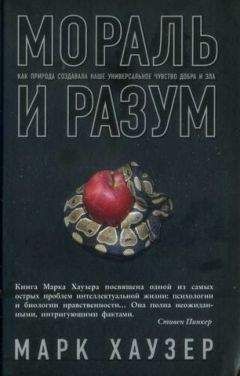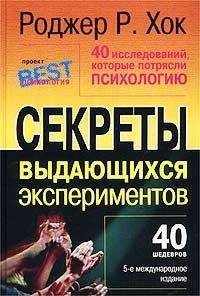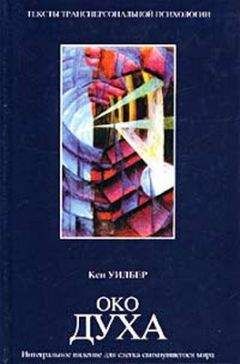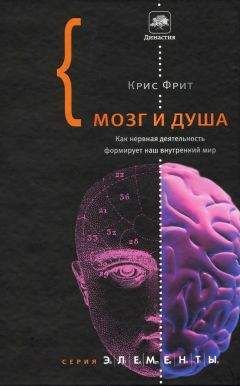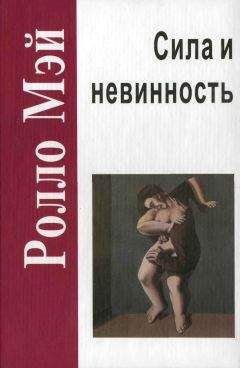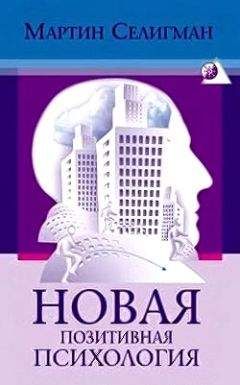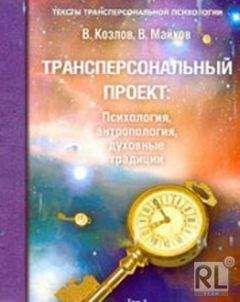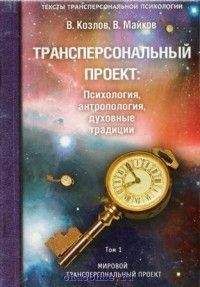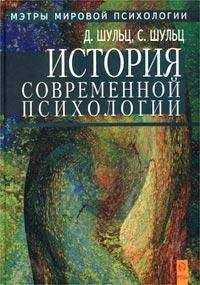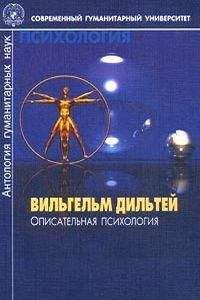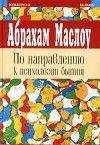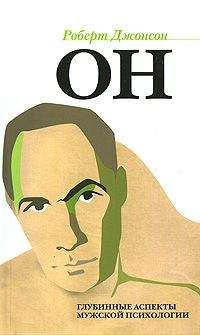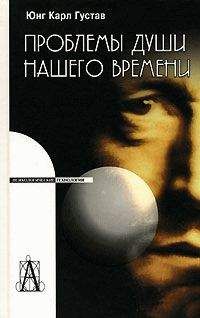Кен Уилбер - Проект Атман

Скачивание начинается... Если скачивание не началось автоматически, пожалуйста нажмите на эту ссылку.
Жалоба
Напишите нам, и мы в срочном порядке примем меры.
Описание книги "Проект Атман"
Описание и краткое содержание "Проект Атман" читать бесплатно онлайн.
В книге одного из ведущих теоретиков трансперсональной психологии сопоставляются взгляды наиболее известных психологических школ и духовных традиций на эволюцию человека. Делается попытка аналитически разрешить проблему достижения всеединства — или проекта Атмана — как называет ее автор.
Издатели благодарят Алексея Купцова, чья финансовая помощь и дружеская поддержка сделали возможной публикацию этой книги. Перевод с английского под редакцией Александра Киселева Научный редактор кандидат философских наук Владимир Майков Серийное оформление Павла Иващука
© Ken Wilber, 1980
© Институт трансперсональной психологии, 2004
© Издательство К. Кравчука, 2004
© Оформление ООО «Издательство ACT», 2004
Тираж 3000 экз.
[98]. Duncan, H. Symbols in society. New York: Oxford Univ., 1968.
[99]. Edgerton, F. (trans). TheBhagavad Gita. New York: Harper, 1964.
[100]. Edinger, E. F. Ego and archetype. Baltimore: Penguin, 1972.
[101]. Ehrmann, J. (ed.) Structuralism. New York: Anchor, 1970.
[102]. Eisendrath, C. The unifying moment. Cambridge: Harvard, 1971.
[103]. Eliade, M. The myth of eternal return. New York: Pantheon, 1954.
[104]. Eliade, M. The sacred and the profane. New York: Harvest, 1959.
[105]. Eliade, M. Shamanism. New York: Pantheon, 1964.
[106]. Eliade, M. Images and symbols. New York: Sheed and Ward, 1969.
[107]. Eliot, C. Hinduism andBuddhism, vols. 1–3. New York: Barnes and Noble, 1968.
[108]. Erikson, E. Childhood and society. New York: Norton, 1963.
[109]. Erikson, E. Insight and responsibility. New York: Norton, 1964.
[110]. Evans‑Wentz, W. The Tibetanbook of the Dead. London: Oxford Univ., 1968.
[111]. Evans‑Wentz, W. The Tibetanbook of the great liberation. London: Oxford Univ., 1968.
[112]. Evans‑Wentz, W. Tibetan yoga and secret doctrines. London: Oxford Univ., 1971.
[113]. Fadiman, J., and Frager, I. (ed.) Personality and personal growth. New York: Harper, 1976.
[114]. Fadiman, J., and Kewman, D. (ed.) Exploring madness. Calif.:Brooks/Cole, 1973.
[115]. Fagan, J., and Sheperd, I. (ed.) Gestalt therapy. New York: Harper, 1970.
[116]. Fairbairn, W. Psychoanalytic studies of the personality. London: Tavistock, 1952.
[117]. Fairbairn, W.. An object‑relations theory of the personality. New York: BasicBooks, 1954.
[118]. Farber, L. The ways of the will. New York: BasicBooks, 1945.
[119]. Federn, P. Ego psychology and the psychoses. New York: BasicBooks, 1952.
[120]. Fenichel, O. The psychoanalytic theory of neurosis. New York: Norton, 1945.
[121]. Ferenczi, S. Stages in the development of the sense of reality. In Sex and psychoanalysis. Boston: Gorham, 1956.
[122]. Ferenczi, S. Thalassa. New York: The Psychoanalytic Quarteque, 1938.
[123]. Ferenczi, S. Furter contributions to the theory and technique of psychoanalysis. New York: BasicBooks, 1952.
[124]. Festinger, L. Theory of cognitive dissonance. New York: Peterson, 1957.
[125]. Feurstein, G. A. Introduction to theBhagavad Gita. London: Rider, 1974.
[126]. Feurstein, G. A. Texbook of yoga. London: Rider, 1975.
[127]. Fingarette, H. The self in transformation. New York: BasicBooks, 1963.
[128]. Flugel, J. Man, morals and society. New York: International Universities Press, 1945.
[129]. Foulkes, D. A grammar of dreams. New York: BasicBooks, 1978.
[130]. Frank, J. Nature and Function ofbelief systems: humanism and transcendental religion. American Psychologist, vol. 32, 1977.
[131]. Frankl, V. Man’’s sears for meaning. New York: Washington Square, 1963.
[132]. Freemantle, F., and Trungpa, С The Tibetanbook of the dead. Berkeley: Shamabhala, 1975.
[133]. Fremantle, A. The Protestant mystics. New York: Mentor, 1965.
[134]. Freud, A. The ego and the mechanisms of defense. New York: International Universities Press, 1946.
Freud, S. The standard edition of the complete psychological work of Sigmund Freud. 24 volumes, translated and editedby James Strachey. London: Hogarth Press and the Institute of Psychoanalysis, 1953–1964.
[135]. Freud, S. The interpretation of dreams. Standard Edition, vols. 4 and 5.
[136]. Freud, S. Three essays on the theory of sexuality. Standard Edition, vol. 7.
[137]. Freud, S. Totem and taboo. Standard Edition, vol. 13.
[138]. Freud, S. On narcissism: an introduction. Standard Edition, vol. 14.
[139]. Freud, S. Beyond the pleasure principle. Standard Edition, vol. 18.
[140]. Freud, S. The ego and the id. Standard Edition, vol. 19.
[141]. Freud, S. Civilization and its discontents. Standard Edition, vol. 20.
[142]. Freud, S. New introductory lectures. Standard Edition, vol. 22.
[143]. Freud, S. An outline of psychoanalysis. Standard Edition, vol. 23.
[144]. Freud, S. A general introduction to psychoanalysis. New York: PocketBooks, 1971.
[145]. Frey‑Rohn, L. From Freud to Jung. New York: Delta, 1974.
[146]. Fromm, E. Escape from freedom. New York: Farrar, Straus, and Giroux, 1941.
[147]. Fromm, E. Psychoanalysis and religion. New York: Bantam, 1967.
[148]. Fromm, E., Suzuki, D. Т., and De Martino, R. ZenBuddhism and psychoanalysis. New York: Harper, 1970.
[149]. Gardner, H. The quest for mind. New York: Vintage, 1972.
[150]. Gebser, J. Ursprung and gegenwart. Stuttgart: Deutsche Verlags‑Ansalt, 1966.
[151]. Gebser, J. Foundations of the aperspective world. Main Currents, vol.29, no. 2, 1972.
[152]. Geertz, C. The interpretation of cultures. New York: BasicBooks, 1973.
[153]. Gendlin, E. Experiencing and the creation of meaning. New York: Free Press, 1962.
[154]. Giovacchini, P. Psychoanalysis. In Corsini, R., reference note #88.
[155]. Glasser, W. Reality therapy. New York: Pocket, 1974.
[156]. Globus, G. et al. (eds). Consciousness and thebrain. Plenum, 1976.
[157]. Goble, F. The third force. New York: Pocket, 1974.
[158]. Goffman, E. The presentation of self in everyday life. Garden City: Anchor, 1959.
[159]. Goldstein, K. The organism. New York: AmericanBook, 1939.
[160]. Goleman, D. The varieties of the meditative experience. New York: Dutton, 1977.
[161]. Govinda, L. Foundations of Tibetan mysticism. New York: Weiser, 1973.
[162]. Gowan, J. Trance, art, and creativity. Northridge, С A; 1975.
[163]. Green, E., and Green, A. Beyondbiofeedback. New York: Delacourte, 1977.
[164]. Greenacre, P. Certain relationshipsbetween fetishism and faulty development of thebody image. Psychoanalytic Study of the Child, vol. 8, 1953.
[165]. Greenson, R. The technique and practice of psychoanalysis. New York: International Universities Press, 1976.
[166]. Grof, S. Realms of the human unconsious. New York: Viking, 1975.
[167]. Group for the Advancement of Psychiatry. Mysticism: spiritual quest psychic disorder? New York: Group for the Advancement of Psychiatry, 1976.
[168]. Guenon, R. Man and hisbecoming according to the Vedanta. London: Luzac, 1945.
[169]. Guenther, H. Buddhist philosophy in theory and practice. Baltimore: Penguin, 1971.
[170]. Guenther, H. Treasures on the Tibetan middle way. Berkeley: Shambhala, 1971.
[171]. Guenther, H. Philosophy and psychology in the abhidharma. Berkeley: Shambhala, 1974.
[172]. Guenther, H. trans. The life and teaching of Naropa. London: Oxford Univ., 1963.
[173]. Guenther, H., and Trungpa, C. The dawn of tantra. Berkeley: Shambhala, 1975.
[174]. Hakeda, Y. S., trans. The awakening of faith. New York: Columbia Univ., 1967.
[175]. Hall, С A primer of Jungian psychology. New York: Mentor, 1973.
[176]. Hall, R. The psycho‑philosophy of history. Main Currents, vol. 29, no. 2, 1972.
[177]. Harrington, A. The immortalist. New York: Random House, 1969.
[178]. Harris, T. I’’m o.k. — you" re o.k. New York: Avon, 1969.
[179]. Hartmann, H. Ego psychology and the problem of adaptation. New York: International Universities Press, 1958.
[180]. Hartshorne, C. The logic of perfection. Ulinoes: Open Cout, 1973.
[181]. Heard, G. The ascent of humanity. London: Jonathan Cape, 1929.
[182]. Heidegger, M. Existence andbeing. Chicago: Henry Regney, 1950.
[183]. Heidegger, M. Being and time. New York: Harper, 1962.
[184]. Heidegger, M. Discourse on thinking. New York: Harper.
[185]. Hixon, L. Coming home. Garden City: Anchor, 1978.
[186]. Hocart, A. Social origins. London: Watts, 1954.
[187]. Holdstock, Т., and Rogers, C. Person‑centered theory. In Corsini, R., reference note #88.
[188]. Hood, R. Conceptual Criticisms of regressive explanations of mysticisms. Rev. Religious Res., vol. 17, 1976.
[189]. Hook, S. (ed.) Dimensions of mind. New York: Collier, 1973.
[190]. Horney, K. The neurotic personality of our time. New York: Norton, 1968.
[191]. Hume, R., trans. The thirteen principle Upanishads. London: Oxford, 1974.
[192]. Husserl, E. Ideas. New York: Macmillan, 1931.
[193]. Huxley, A. The perennial philosophy. New York: Harper, 1970.
[194]. Jacobi, J. The psychology of С G. Jung. London: Routledge and Kegan Paul, 1968.
[195]. Jacobson, E. The self and the object world. New York: International Universities Press, 1964.
[196]. Jakobson, R. Child language aphasia and phonological universals. Quoted in Gardner, reference note #149.
[197]. James, W. The principles of psychology, vols. 1–2. New York: Dover, 1950.
[198]. James, W. Varieties of religious experience. New York: Collier, 1961.
[199]. Jantsch, E., and Waddington, C. (eds). Evolution and consciousness. Addison‑Wesley, 1976.
[200]. Jaynes, J. The origin of consciousness in thebreakdown of thebicameral mind. Boston: Houghton Mifflin, 1976.
[201]. John of the Cross, St. Dark night of the soul. Garden City: Doubleday, 1959.
[202]. John of the Cross, St. Ascent of Mount Carmel. Garden City: Doubleday, 1958.
[203]. Jonas, H. The gnostic religion. Boston: Beacon, 1963.
[204]. Jones, R. M. Contemporaty educational psycholgy: selected essays. New York: Harper, 1967.
Jung, C. G. The collected work of C. G. Jung, Adler, G., Fordham, M. and Read, H., eds.; Hull, R. F. C. trans. Bolligen Series XX, Princeton: Princeton Univ. Press.
[205]. Jung, C. G. Symbols of transformation, collected works 5.
[206]. Jung, C. G. Psychological types, collected works 6.
[207]. Jung, C. G. Two essays on analytical psychology, collected works 7.
[208]. Jung, C. G. The psychological foudations ofbelief in spirits, collected works 8.
[209]. Jung, C. G. The structure and dynamics of the psyche, collected works 8.
[210]. Jung, C. G. The archetypes and the collective unconscious, collected works 9.
[211]. Jung, C. G. Aion — researches into the phenomenology of the self, collected works 9, part 2.
[212]. Jung, C. G. Mysterium coniunctionis, collected works 14.
[213]. Jung, C. G. The portable Jung. Campbell, J., ed. New York: Viking, 1972.
[214]. Jung, C. G. Thebasic writings of С G. Jung. DeLaszlo, V. S., ed. New York: Modern Library, 1959.
[215]. Kadloubovsky, E., and Palmer, G., trans. Writings from the «Philokalia» on prayer of the heart. Lodon: Farber and Farber, 1954.
[216]. Kahn, H. I. The soul whence and whither. New York: Sufi Order, 1977.
[217]. Kaplan, B. (ed.) The inner world of mental illness. New York: Harper, 1964.
[218]. Kaplan, L. Oneness and separateness. New York: Simon and Schuster, 1978.
[219]. Kaplan, P. «An excursion into the “undiscovered country.”» Rediscovery of thebody. Garfield, C. (ed). New York: Dell, 1977.
[220]. Kapleau, P. The three pillars of Zen. Boston: Beacon, 1965.
[221]. Keleman, S. Yourbody speaks its mind. New York: Simon and Schuster, 1975.
[222]. Kierkegaard, S. The concept of the dread. Princeton: Princeton Univ., 1944.
[223]. Kierkegaard, S. Fear and trembling and the sickness unto death. New York: Anchor, 1954.
[224]. Klein, G. S. Psychoanalytic theory: an exploration of essentials. New York: International Universities Press, 1976.
[225]. Klein, M. The psychoanalysis of children. New York, 1960.
[226]. Klein, M. New directions in psychoanalysis. London: Tavistock, 1971.
[227]. Kluckhohn, C, and Murray, H. Personality: in nature, society, and culture. New York: Knopf, 1965.
[228]. Kobasa, S., and Maddi, S. Existential personality theory. In Corsini, R., reference note #88.
[229]. Kohlberg, L. Development of moral character and moral ideology. In Hoffman, M. and Hoffman, L. (eds). Review of Child Develorment Research, vol. 1, 1964.
[230]. Kohlberg, L. «From is to ought». In Mischel. T. (ed). Cognitive development and epistemology. New York: Academic Press, 1971.
[231]. Krishna, Gopi. The secret of yoga. New York: Harper, 1972.
[232]. Krishnamurti, J. The first and last freedom. Wheaton, Quest, 1968.
Подписывайтесь на наши страницы в социальных сетях.
Будьте в курсе последних книжных новинок, комментируйте, обсуждайте. Мы ждём Вас!
Похожие книги на "Проект Атман"
Книги похожие на "Проект Атман" читать онлайн или скачать бесплатно полные версии.
Мы рекомендуем Вам зарегистрироваться либо войти на сайт под своим именем.
Отзывы о "Кен Уилбер - Проект Атман"
Отзывы читателей о книге "Проект Атман", комментарии и мнения людей о произведении.





